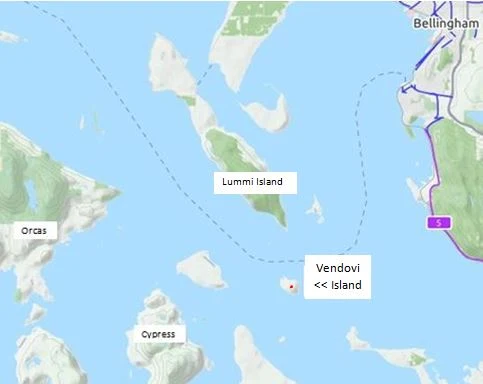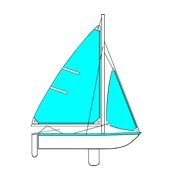In my opinion, marking the rode is not hard nor costly. Suppliers sell tags, with footage numbers, some people use cable ties or bits of yarn.
Some exuberant skippers, mark every twenty five feet and use day-glo colors.
Years of anchoring in the San Juans has honed my system, or should I say reduced it to what works for me.
My obvious observations:
- Anchoring, like coming in to the dock or slip must be done fairly quickly or the boat floats away. This means doing math calculations or untangling snarly rode should be completed beforehand.
- Under water, red, black,and other colors look the same or just disappear.
- Trying to spot, cutesy paint marks, little tags or bits of string flying out of the hawse pipe is problematic, especially for newbie crew.
- Guesstimating how much rode has been let out is not accurate, but is never the less the system I used for years.
- I tried using a code, such as two marks, three marks, four marks to designate small increments. It was confusing, hard to keep track of, and kinda pointless anyway since I forgot the code.
- Anchoring in dark or windy conditions, or stiff current, quickly identifies inadequate systems, poor planning, and lack of preparation.
- My experience has been that all paints I have tried last only one season in salt water. Now I use whatever left over black or red latex paint or spray paint I have. I apply it on a three to four foot section.
- My first mark is at fifty feet, then one hundred, then one fifty, etc. Since I usually anchor in 15 - 20 feet the third mark never sees water and stays in good shape.
- If I suspect problems or crucial timing issues, I will pull all the needed rode out of the locker and cleanly flake it on deck beforehand.
- When I up anchor, if conditions permit, I flake the rode on deck for cleaning and drying and then carefully drop it in the locker later. Sometimes I put my thirty feet of wet or muddy chain in a milk crate and leave it in the sun. Putting away wet gear tends to stink, so I avoid it when I can, especially if I plan to anchor again that day.
- I have a pair of dedicated gloves I use for anchor handling.
 |
| How well I anchor is proportional to how well I sleep! |









